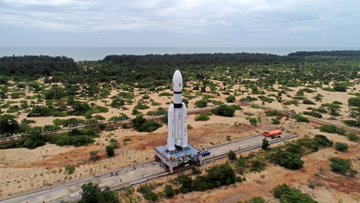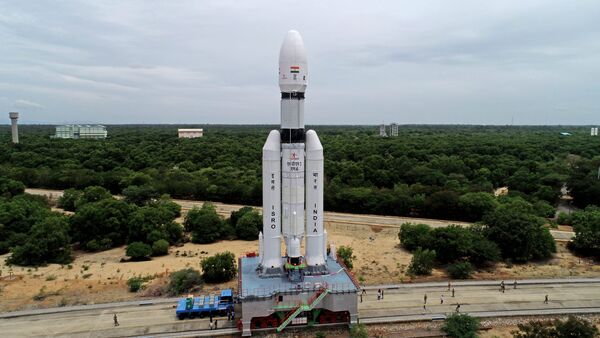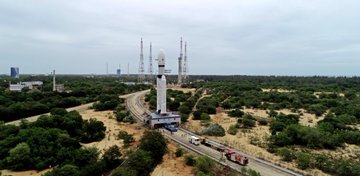To show end-to-end capabilities in safe landing and wandering on the lunar surface, this mission is a follow-up to Chandrayaan-2. It is set up as a lander and rover. The Satish Dhawan Space Centre in Sriharikota will serve as the launch site for Chandrayaan-3, which will use the Launch Vehicle Mark-III.
Chandrayaan-3, India’s third moon mission, will launch on July 14 at 2:35 p.m., the Indian Space Research Organisation (ISRO) said on Thursday.

An announcement on the launch of Chandrayaan-3 was made by ISRO in a tweet. “Announcing the launch of Chandrayaan-3: LVM3-M4/Chandrayaan-3 Mission: The launch is now scheduled for July 14, 2023, at 2:35 pm IST from SDSC (Satish Dhawan Space Centre), Sriharikota,” ISRO said.
Somanath S, the chairman of ISRO and secretary of the Department of Space, informed reporters that the lander will try a gentle landing on August 23 or August 24. The mission life of the lander, according to ISRO authorities, is one lunar day, which is equivalent to 14 days on Earth.
“The time of the Moon’s rising determines the date (for soft-landing). There must be sunshine while landing. For the first 14–15 days, the Moon receives sunlight, and then there is no sunlight for the next 14–15 days, they observed.
To show end-to-end capabilities in safe landing and wandering on the lunar surface, this mission is a follow-up to Chandrayaan-2. It is set up as a lander and rover.
The Chandrayaan-3 mission has the equipment to investigate the elemental composition close to the landing site, the lunar surface plasma environment, lunar seismicity, and the thermophysical characteristics of the lunar regolith.
According to ISRO officials, another experimental instrument will study the spectro-polarimetric signatures of the Earth from the lunar orbit, which would fit in the theme of “Science from the Moon,” even though the scope of these scientific instruments on the lander and the rover would fit in the theme of “Science of the Moon.”
The Chandrayaan-3 spaceship performed the necessary tests to verify its capacity to resist the extreme vibration and acoustic conditions it would experience during launch in March of this year. Given that the Chandrayaan-3 spacecraft, which is scheduled to be launched by LVM3 (Launch Vehicle Mark-III) (formerly known as GSLV Mk III), is a composition of three modules—propulsion, lander, and rover—these tests were exceptionally difficult.
MUST READ – Tesla Inc. Reduced Its Battery Production Personnel In Shanghai Facing A Severe Price Battle In China.
The Satish Dhawan Space Centre in Sriharikota will serve as the launch site for Chandrayaan-3, which will use the Launch Vehicle Mark-III. The lander and rover combination will be propelled by the propulsion module up to a 100-kilometer lunar orbit. To analyze the spectral and polarimetric data of Earth from the lunar orbit, it contains a payload called Spectro-Polarimetry of Habitable Planet Earth

The payloads of the lander include the Langmuir Probe, Chandra’s Surface Thermophysical Experiment, Instrument for Lunar Seismic Activity, and Chandra’s Surface Thermophysical Experiment, which measures thermal conductivity, temperature, and seismic activity. For lunar laser range research, a passive Laser Retroreflector Array from the National Aeronautics and Space Administration (NASA) of the US is also available.
The lander module’s primary job is to transport it from launch vehicle injection to the final 100 km circular polar orbit of the moon and then detach it. In addition, the propulsion module features a value-added research payload that will work after the lander module separates.



